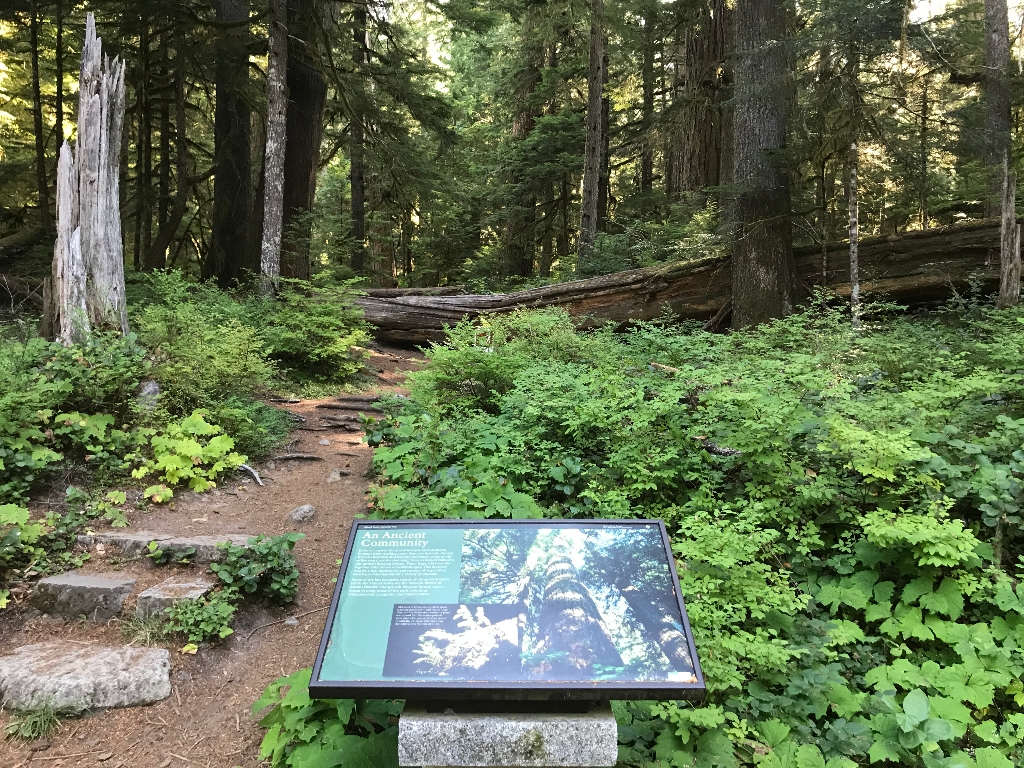
Title: An Ancient Community
Main Text
Enter an ancient forest and find yourself sheltered by giant trees reaching more than 200 feet into the sky. Western hemlock and western red-cedar, some as old as 850 years, are the dominant trees in Mount Rainier's old-growth lowland forests. These large, old trees live together with others of different ages. This diversity creates a rich understory and canopy of vegetation, which provides habitat for a variety of animals.
Some of the last extensive stands of old-growth forest left in the United States are the lowland forests of Mount Rainier. Old-growth lowland forests can be found in many areas of the park including Ohanapecosh, Longmire, and Carbon River.
Secondary Text
Old-growth forests also contain snags - standing dead trees - and "nurse" logs that provide shelter for a variety of plant and animal life. Nurse logs provide ideal places for young plants to sprout. Eventually, the snags and nurse logs decompose and become new soil.
Exhibit Panel Description
A large photo fills up the right two-thirds of the exhibit panel. The photo shows several large evergreen trees reaching up towards the sky, branches interlocking in a dense canopy with a few glimpses of blue sky. The text forms a column on the left third of the panel. Underneath the text and half overlapping the larger photo, a smaller photo shows a log with several small evergreen saplings and other plants growing out of it. The secondary text is inset into the upper left corner of the photo. A small box in the lower right corner of the panel reads "User Fee Project. Your Fee Dollars at Work. Entrance fees were used to produce this exhibit".
Visit This Exhibit Panel
Twin Firs exhibit panel is located next to the Twin Firs trailhead, which is along the road to Paradise between Kautz Creek and Longmire. The Paradise Road is open year-round. NOTE: The Twin Firs exhibit panel was damaged by a fallen tree and has been temporarily removed.
Is there something we missed for this itinerary?
Itineraries across USA


















































